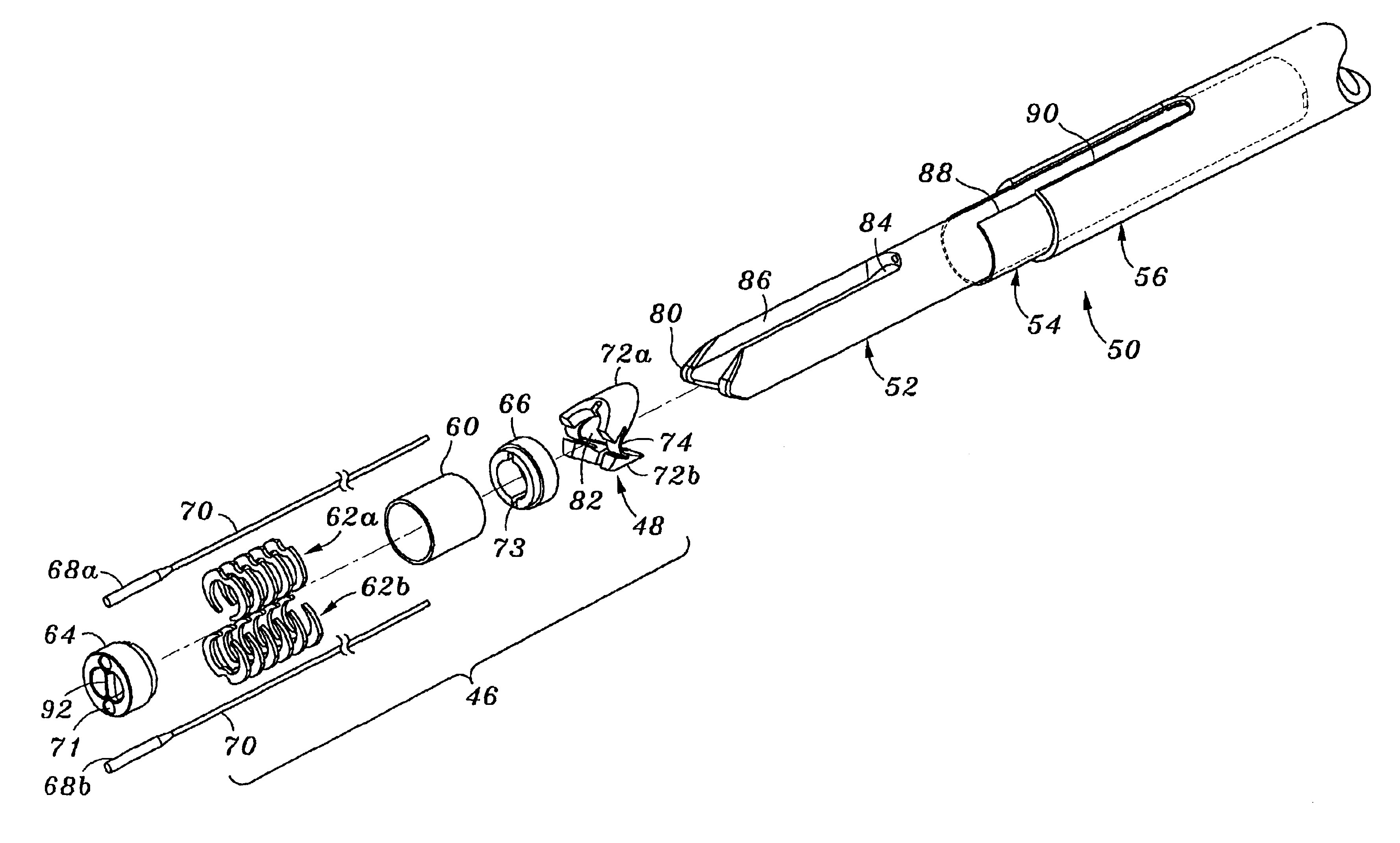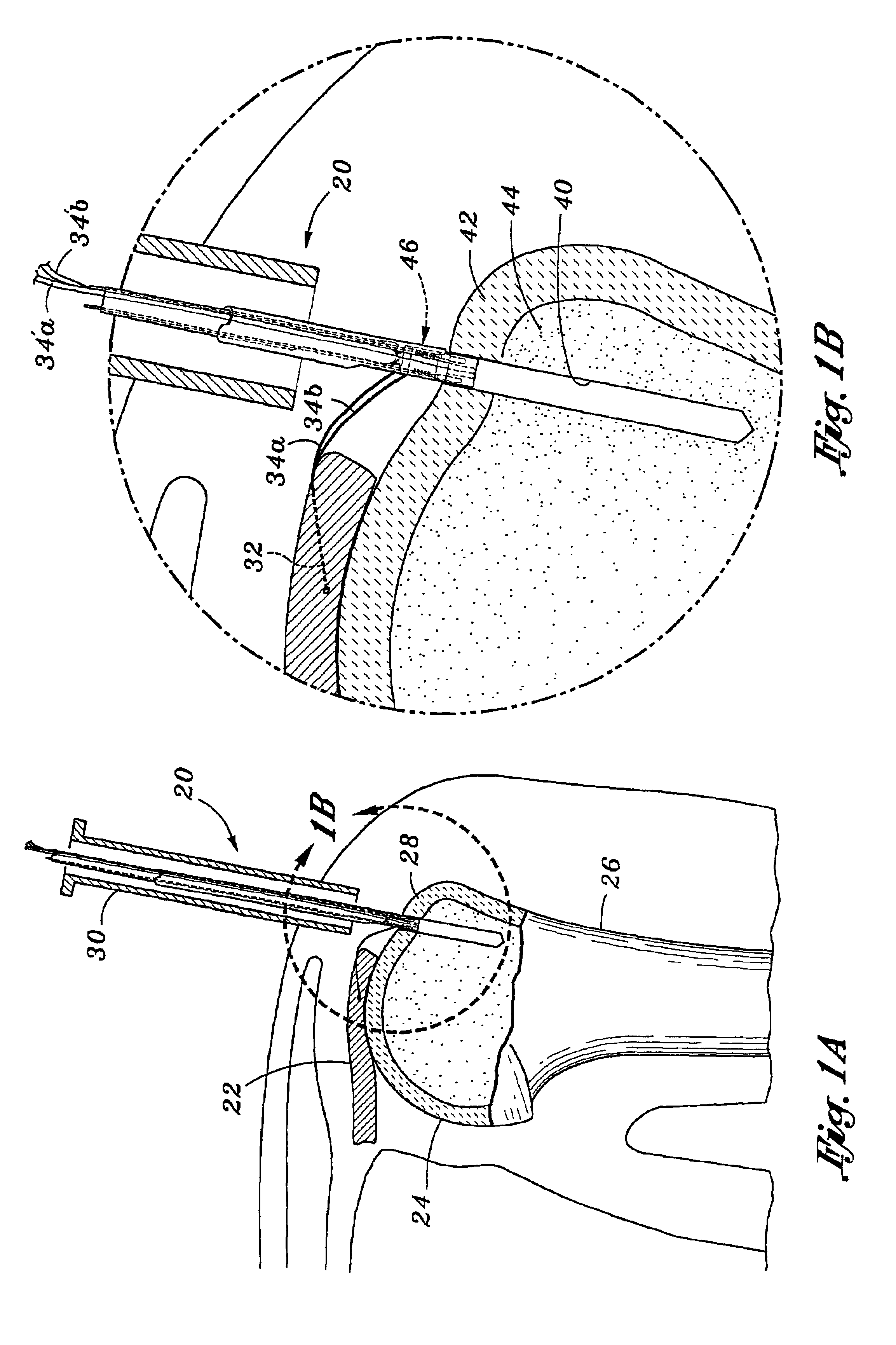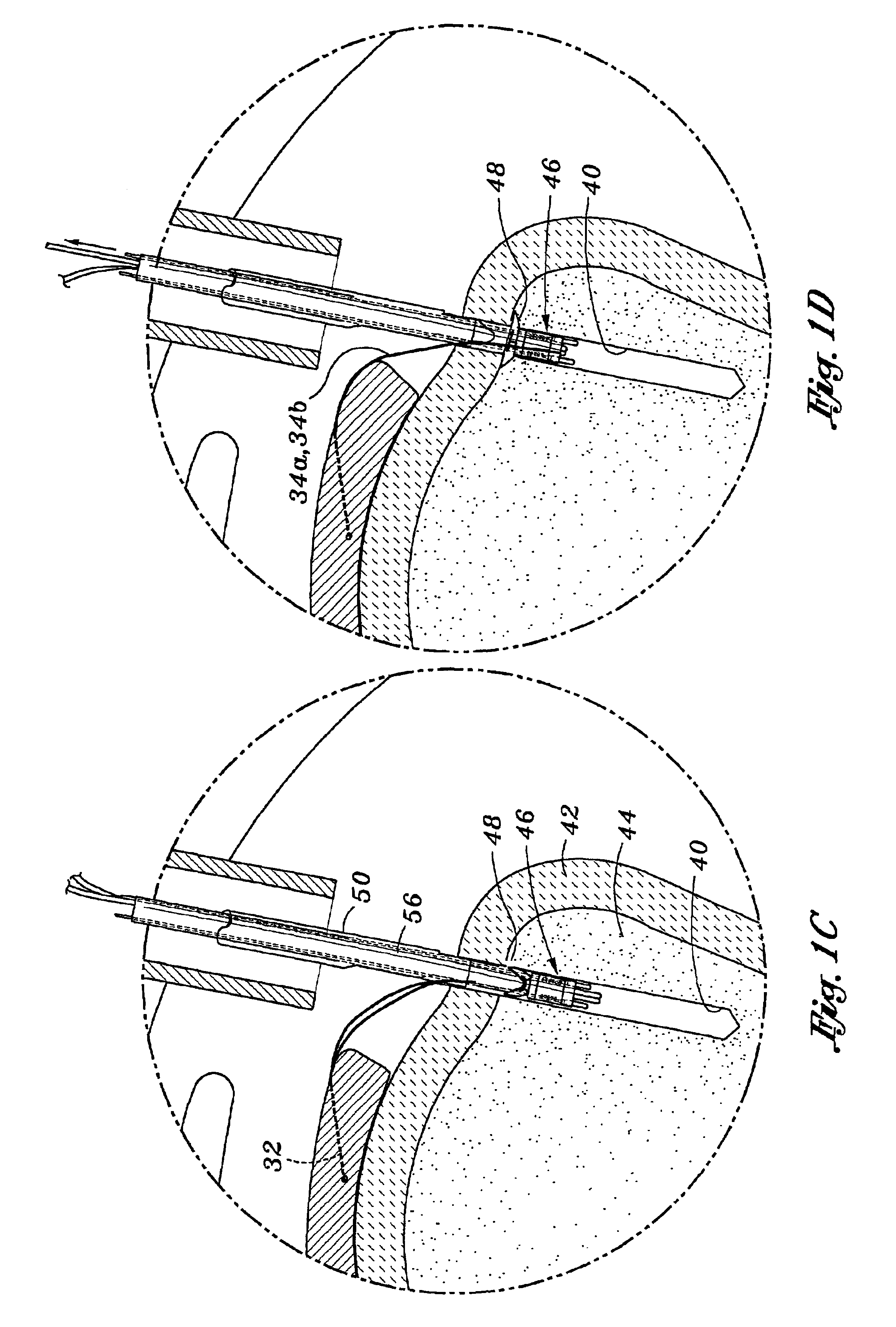Method and apparatus for attaching connective tissues to bone using a knotless suture anchoring device
a technology of anchoring device and connective tissue, which is applied in the field of anchoring and methods for securing connective tissue, can solve the problems of arduous and technically demanding endoscopic knotting tasks, and achieve the effect of reducing the size of the passag
- Summary
- Abstract
- Description
- Claims
- Application Information
AI Technical Summary
Benefits of technology
Problems solved by technology
Method used
Image
Examples
Embodiment Construction
The present invention provides an improved knotless suture anchor apparatus for anchoring a length of suture with respect to a body cavity. In the exemplary embodiment described herein, the apparatus is used to anchor a length of suture to a bone structure, specifically the humeral bone of the human shoulder. The length of suture is desirably looped through soft tissue, such as a rotator cuff tendon, to approximate and fix the soft tissue with respect to the body cavity (e.g., bone structure). It should be understood, however, that the suture anchor apparatus may be utilized to secure a length of suture to body cavities other than in a bone structure, and may even be used to anchor the suture outside of a body cavity, or merely to a predetermined location within the body. In this regard, the preferred apparatus includes an anchor body within which the length of suture may be anchored without knots. If the anchor body is to be implanted within the body cavity, structure on its exteri...
PUM
 Login to View More
Login to View More Abstract
Description
Claims
Application Information
 Login to View More
Login to View More - R&D
- Intellectual Property
- Life Sciences
- Materials
- Tech Scout
- Unparalleled Data Quality
- Higher Quality Content
- 60% Fewer Hallucinations
Browse by: Latest US Patents, China's latest patents, Technical Efficacy Thesaurus, Application Domain, Technology Topic, Popular Technical Reports.
© 2025 PatSnap. All rights reserved.Legal|Privacy policy|Modern Slavery Act Transparency Statement|Sitemap|About US| Contact US: help@patsnap.com



